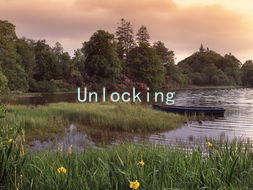Emotional Tribe Dynamics: Navigating Love and Conflict with Effective Talk Strategies
Emotional Tribe Dynamics: Navigating Love and Conflict with Effective Talk Strategies
In the intricate world of relationships, the balance between love and conflict often resembles a dance, where partners must learn to navigate each others emotional landscapes. The concept of Emotional Tribe Dynamics encapsulates how individuals interact in the realm of romance, drawing parallels to the behaviors and communications found within tribes. To foster a healthy, thriving relationship, mastering effective talk strategies is crucial.
Understanding Emotional Dynamics
Every relationship inherently involves emotional dynamics. Just as tribes form connections based on shared experiences and support systems, couples build intimacy and understanding through their interactions. Emotions serve as both the glue that binds partners together and the tension that can lead to conflicts. Recognizing these emotional flows can empower partners to communicate effectively, thereby enhancing their connection and minimizing misunderstandings.
Active Listening: The Groundwork of Communication
Effective communication begins with active listening. This involves not only hearing the words spoken by the partner but also understanding the emotions behind them. Here are practical strategies for active listening:
1. Give Full Attention: Put away distractions and focus entirely on your partner when they speak. This shows respect and genuine interest.
2. Reflect Back: After your partner has expressed their feelings, paraphrase or summarize what you heard. This not only clarifies understanding but also validates their emotions.
3. Ask Clarifying Questions: If something is unclear, don’t hesitate to ask questions. This demonstrates that you are engaged and care about accurately understanding their perspective.
Using “I” Statements to Express Feelings
When discussing feelings or conflicts, using “I” statements can prevent the other person from feeling attacked. This approach emphasizes personal experience over blame. For example, instead of saying, “You never listen to me,” one might say, “I feel overlooked when my thoughts aren’t acknowledged.” This subtle shift in language can de-escalate tensions and facilitate open dialogue.

The Power of Vulnerability
Vulnerability is often seen as a weakness, yet it is a cornerstone of genuine connection. Sharing fears, insecurities, and aspirations fosters trust. Partners can cultivate vulnerability by:
1. Creating Safe Spaces: Ensure that conversations occur in environments where both individuals feel comfortable expressing themselves without judgment.
2. Encouraging Openness: Reinforce that sharing feelings is welcomed and appreciated, establishing a norm of emotional honesty.
3. Responding Compassionately: When vulnerability is met with empathy and support, it strengthens the emotional bond and encourages further openness.
Conflict Resolution Strategies
Conflict is inevitable in any relationship, but the way partners handle it can define the strength of their bond. Here are effective strategies for navigating conflict:
1. Stay Calm: Take a breather if emotions run high. Approach discussions with a level head to prevent escalation.
2. Focus on Issues, Not Personalities: Address the specific issue at hand without resorting to personal attacks. This keeps the conversation constructive.
3. Seek Compromise: Aim for solutions that satisfy both partners rather than a win-lose mentality. Compromise fosters teamwork and reinforces the feeling of being on the same side.
4. Follow Up: After resolving a conflict, revisit the discussion later to ensure both partners feel comfortable with the outcome and to reaffirm their commitment to each others wellbeing.
Conclusion
Navigating the emotional dynamics of love and conflict requires a set of skills that can be learned and honed over time. By employing effective talk strategies such as active listening, using “I” statements, embracing vulnerability, and prioritizing constructive conflict resolution, couples can deepen their connection and foster a healthier relationship. Just as tribes flourish through strong communication and mutual support, so too can couples find strength in their emotional dynamics, paving the way for lasting love and understanding.





